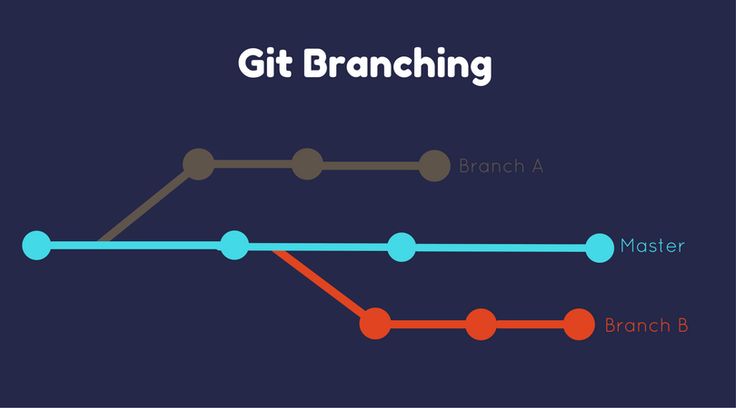Day13 to pro🚀in Devops♾️:Advanced Git & GitHub for DevOps Engineers 🚀
 Jawaid Akhtar
Jawaid Akhtar
Hello, Git enthusiasts!🌟 Today, we're diving into some advanced Git and GitHub concepts crucial for any DevOps engineer's toolkit. Understanding and mastering these concepts will make your version control practices more robust and efficient. We'll explore Git branching, the subtleties of revert vs. reset, and the intricacies of rebase vs. merge. Let's get our hands dirty with some code! 💻
Git Branching 🌿
Branching in Git is like having parallel universes in your codebase. Each branch is an independent line of development, allowing you to work on new features, bug fixes, or experimental ideas without interfering with the main project. The beauty of branching is that it keeps your work isolated until you’re ready to merge it back into the main line of development.
Why Branching is Essential
Branches enable better collaboration among team members. Multiple developers can work on different features simultaneously without stepping on each other’s toes. When a feature is ready, it can be merged back into the main branch, integrating smoothly into the project.
Creating and Using Branches
Creating a branch is straightforward:
git checkout -b feature-branch
This command creates a new branch called feature-branch and switches to it. Once your work on the branch is done, you can merge it back into the main branch using a pull request.
Git Revert and Reset ⏪⏮️
Both git revert and git reset allow you to undo changes in your repository, but they serve different purposes and are used in different scenarios.
Git Reset
git reset moves the HEAD pointer to a specified commit, effectively changing the commit history. It’s powerful but can be dangerous because it rewrites history. It’s best used for local changes that haven’t been shared with others.
Git Revert
git revert, on the other hand, is safer for collaborative environments. It creates a new commit that undoes the changes of a previous commit. This way, the commit history remains intact, and the undo action is clearly documented.
When to Use Which?
Reset: Use when you want to remove commits from the history (local changes).
Revert: Use when you need to undo changes in a shared repository without rewriting history.
Git Rebase and Merge 🔄🧩
What is Git Rebase?
git rebase allows you to move or combine a sequence of commits to a new base commit. This can result in a cleaner, more linear project history. However, it rewrites commit history, which can cause issues if not handled correctly, especially in a shared repository.
What is Git Merge?
git merge combines multiple sequences of commits into one unified history. Unlike rebase, merging retains the context of the original branches, which can make the history look more complex but also more informative.
Choosing Between Rebase and Merge
Rebase: Use for a cleaner, linear commit history. Ideal for local branches before sharing with others.
Merge: Use to preserve the full context of development, showing when branches were created and merged. Ideal for integrating completed features or fixes into the main branch.
Practical Tasks 🛠️
Task 1: Feature Development with Branches
Step 1: Create a Branch and Add a Feature
Let's add a new feature by creating a branch:
Create a new file
version01.txtinside theDevops/Git/directory with the content: "This is the first feature of our application."Create a new branch from
master:git checkout -b devAdd and commit your changes:
git add file1.txt git commit -m "Added new feature"
Step 2: Push Changes to GitHub
Push your local commits to GitHub:
git push origin dev
Step 3: Add More Features with Separate Commits
Update file1.txt and commit after each change:
echo "This is the bug fix in development branch" >> file1.txt
git commit -am "Added feature2 in development branch"
echo "This is gadbad code" >> file1.txt
git commit -am "Added feature3 in development branch"
echo "This feature will gadbad everything from now" >> file1.txt
git commit -am "Added feature4 in development branch"
Step 4: Restore the File to a Previous Version
Revert the file to a previous state:
git revert HEAD~2
Task 2: Working with Branches
Demonstrate Branches
Create multiple branches and take screenshots of the branch structure using:
git branch
Merge Changes into Master
Make changes in dev and merge into master:
git checkout master
git merge dev
Practice Rebase
Try rebasing and observe the changes:
git rebase master
Conclusion
Mastering these advanced Git concepts will significantly enhance your ability to manage code effectively in a collaborative environment. Branching, resetting, reverting, merging, and rebasing are essential tools in a DevOps engineer's toolkit. Keep practicing, and you'll soon handle complex version control tasks with ease.
Feel free to share your thoughts or ask questions in the comments below. If you found this guide helpful, consider sharing it with your peers!
Happy Learning!✨
#90DaysOfDevops #TrainWithShubham #Linux #Devops #Automation #git #github
Subscribe to my newsletter
Read articles from Jawaid Akhtar directly inside your inbox. Subscribe to the newsletter, and don't miss out.
Written by
